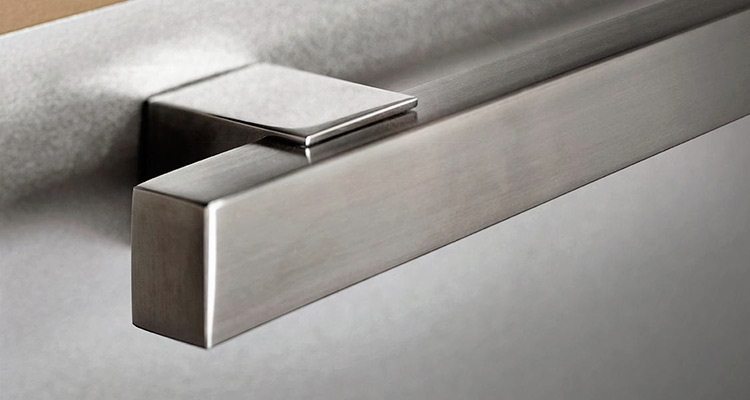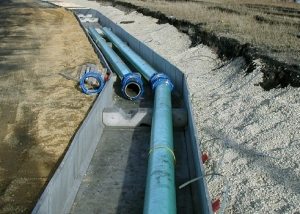Plugs for various types of pipes (metal, plastic) are one of the most popular types of fittings. They can be used not only for classical jamming of pipelines, but also for the protection of products if they are used for other purposes. Plugs are available for both profile and round pipes. These parts differ in material of execution, for example, plastic or metal, and in size.
Content
Purpose of plugs for profile pipes
The main purpose of the plug for the pipe is to overlap its end holes. In this case, the use of the part can be both temporary (for the period of repair work), and permanent.
Also, metal or plastic, round or profile plugs are used in the manufacture of containers for industrial purposes, which operate under pressure. It can be various pneumatic and hydraulic vessels and devices, boilers.
An important purpose of the plugs is the overlap of the pipes during their transportation. In this way, damage to the inner surface of the products can be avoided. From plastic, the plug on the profile pipe allows you to protect the structure from unwanted moisture, various debris, and also protect it from any mechanical influences.
Plastic and metal caps widely used to seal the pipe, which is a structural element of the fence. They can also plug holes in furniture.
Materials for production
The jamming elements almost always correspond to the material of which the pipe is made. Metal plugs often made of stainless or simple steel, aluminum, non-ferrous alloys. Welding is not always necessary for their installation.
Note! The simplest type of steel part is an iron plate, which can be adjusted with your own hands to the size of the profile pipe and then welded.
Another type of material is a polymer (polyethylene, polypropylene, polyvinyl chloride). Polyethylene is the most popular for the manufacture of plugs. Polyvinyl chloride parts are used for pipes having a wall thickness of more than one millimeter, and withstand temperature extremes in the range of -30 - +60 degrees.
The most expensive are chrome elements. They are most often used in the decoration of furniture, equipment, sports equipment.
Types of silencing elements for profile products
Plugs are selected based on the material of the existing pipe. Polymer elements are used for plastic products, however, with small diameters and a low pressure value, a polyethylene part can be supplied to the metal pipeline.
Steel plugs for profile pipes are mainly used to dampen steel structures.
Elements differ in the way they are fixed. So, there are plugs for pipes:
- spherical;
- flanged;
- rotary;
- interflange;
- elliptical;
- flat welded.
Steel elements on a profile pipe can withstand temperatures up to 600 ºС. In addition, they are resistant to aggressive environments and have various shapes (square, oval, rectangular, etc.).
At the place of use, the plugs are divided into external and internal. Plastic plugs for a profile pipe having a square section are made only of the external type. Similar elements for rigid products made of polyvinyl chloride are both external and internal.
Plastic parts are often used in everyday life as a fitting for silencing pipes without the use of welding. They have a certain number of stiffeners, which provide reliable fastening. Thanks to their shape, which converges into a cone, it greatly facilitates entry into the pipe.

Plastic plugs do not require welding, they are simply inserted into the pipe and securely close the cut
Manufacture and special types of plugs
Plastic plugs are typically produced by injection molding. This method is the most popular since it allows you to produce large batches of elements in a relatively short time.
Note! Parts for a profile pipe are made with recycled composite materials. This allows you to reduce the cost without loss of product quality.
There are some special types of plugs that are applicable for professional purposes:
- pneumatic plug;
- mechanical;
- oil-resistant.
The first type of elements is divided into multidimensional, high-temperature, with standardized diameters, etc. The plug for the second type of pipe is made of steel, aluminum, plastic and can be chemically resistant, with locks for wells and so on. Special plugs designed for pipelines that operate under pressure from 10 to 25 atmospheres are also separately produced.
Characteristics of Plastic Plugs
The plastic plug is simple and quick to install by inserting it into a pipe or rack. She eventually does not lose color under the influence of ultraviolet radiation and temperature changes. Such products can last about seven years, providing excellent sealing. Preventing water ingress and the accumulation of debris inside the product protects it from corrosion.

In the pipes that serve as a support for the fence, debris and water can accumulate, which leads to the destruction of the metal, which is why you need to use plugs to close the end
Exterior elements, in addition to creating a seal, protect not only the end of the pipe, but also up to five centimeters of the nearby area. Internal plugs are fully inserted into the product, but their cost is higher.
The main dimensions of the square parts are: 150x150; 140x140; 120x120; 100x100; 80x80; 70x70; 60x60; 50x50; 40x40; 30x30; 25x25; 20x20 and 15x15. Rectangular caps usually have the following parameters: 100x120; 80x120; 80x100; 60x120; 60x100; 60x80; 50x100; 40x100; 40x80; 40x60; 30x60; 30x50; 25x50; 25x28; 25x40; 20x60; 20x50; 20x40; 20x35; 20x30 and 15x30.
How to choose a suitable part
When performing work using profile pipes with their own hands, plugs for them are selected based on the scope, material and color. If the profile must be sealed tight and the end element will be under pressure, then a simple metal plate is best. It can be welded to a steel pipe with your own hands.
Note! For a PVC pipe this solution is categorically unacceptable.
In the absence of pressure, there are enough plastic elements that can be selected regardless of the material of the pipeline. When transporting shaped products or the need for short-term use, it is better to use external plastic plugs. Their installation and dismantling is very simple.
For long-term operation, internal elements are suitable.After shrinkage, the integrity of the product is checked. Any cracks in the plugs made of plastic are not allowed. If the choice is important cost and there is no need for steel parts, then it is better to give preference to PVC tips.
A pipe plug is an important and practically necessary element for various pipelines and other areas of use of shaped pipes. A variety of types of these elements allows you to choose a part with the required aesthetic and operational characteristics.








